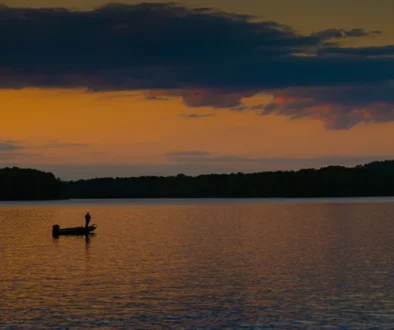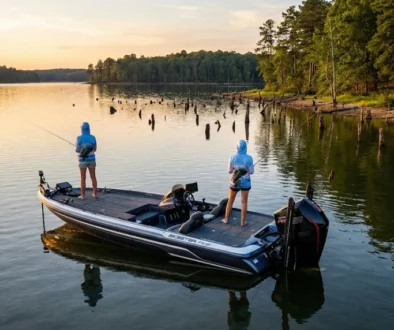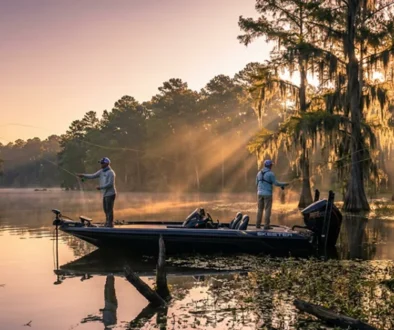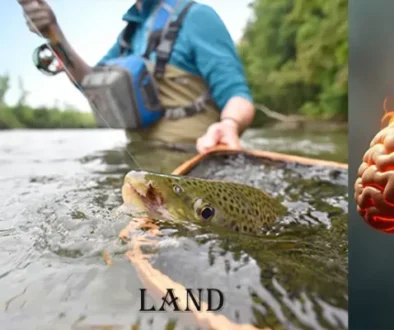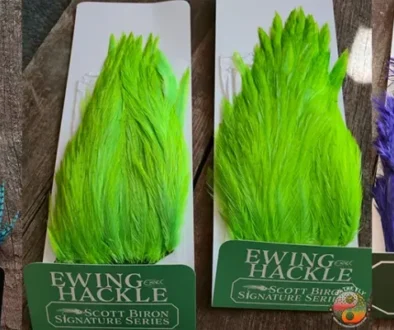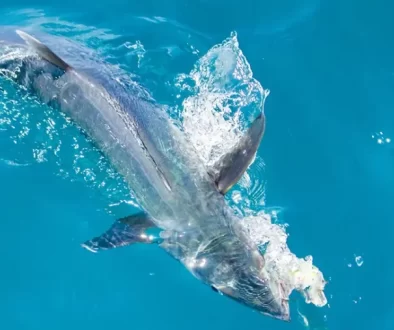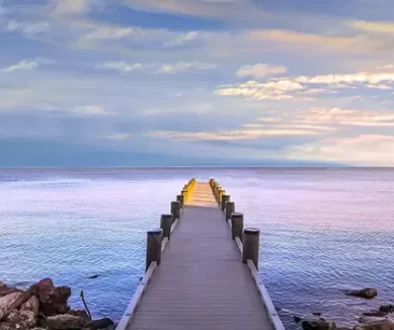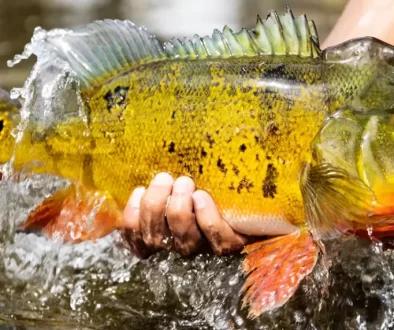How to Get Started Striped Bass Fly Fishing
Ever feel the thrill of a striped bass striking your fly at the end of a cast? Or experienced that adrenaline rush as you reel in, hoping this is ‘the big one’? Welcome to the world of Getting Started Striped Bass Fly Fishing.
A sport with both finesse and raw power, striped bass fly fishing isn’t just about casting a line. It’s an art form where skill meets strategy.
You’re here because you want more than cursory knowledge; you crave that hands-on experience, mastering everything from choosing the right gear to understanding striped bass behavior. You’re eager for those exhilarating moments on rocky flats or sandy beaches when your perfect cast pays off.
is just getting started. Keep your eyes peeled for key tips and be prepared to embark on some successful fishing trips. Let’s reel in success together!
Table Of Contents:
- Essential Gear for Striped Bass Fly Fishing
- Perfecting Your Casting Skills
- Understanding Striped Bass Behavior
- Top Flies For Striped Bass Fly Fishing
- Ideal Locations For Striped Bass Fly Fishing
- Deep Water Tactics For Striped Bass Fly Fishing
- Safety Measures And Conservation In Striped Bass Fly Fishing
- Accessories For Successful Striped Bass Fly Fishing
- FAQs in Relation to Getting Started Striped Bass Fly Fishing
- In Conclusion of Striped Bass Fly Fishing
Essential Gear for Striped Bass Fly Fishing
If you’re prepping to cast a line for striped bass, certain items are key in ensuring your fishing adventure is successful. First and foremost is the choice of fly rod and fly reel.
The Right Rod and Reel
You’ll want to use a 10-weight fly rod as it’s versatile enough to handle both small and large stripers. This heavy-duty gear will give you the backbone needed when battling these muscular fish. As an experienced striper angler would say, “It’s not about catching the smaller fish; it’s being ready when the bigger one bites.“
A strong saltwater reel with sealed drag isn’t just good news—it’s non-negotiable. These reels resist corrosion from salty water while maintaining smooth performance under pressure (and trust me, stripers do apply pressure.). For example, if I were standing on sandy beaches of Long Island aiming my cast at distant ripples hinting at a school of stripers below—I’d have full confidence in my sturdy saltwater reel.
Importance of Fly Lines
Your choice in fly lines depends largely on where you plan to catch those elusive striped bass. A floating line might be all you need if fishing shallow water like estuaries or rocky flats—perfectly versatile across varied environments. It lets your bass flies float enticingly near surface-feeding stripers—an excellent strategy especially during falling tide when they tend to feed close-to-shore.
In contrast, intermediate lines come into play on open-sandy beaches or deeper waters where more weight helps reach lower parts of the water column—a must-have tool targeting deep-water lurkers. Here comes another secret tip: Always carry an extra spool loaded with different types of lines. It will let you quickly switch strategies when stripers change their depth preference.
Understanding more about how different types of fly lines can affect your fishing experience. Check it out for a deeper dive into the world of fly lines.
I’m sorry, but your request is missing the content that needs to be rewritten. Could you please provide it so I can help further?
Perfecting Your Casting Skills
Fly fishing for striped bass demands a blend of precision and power. So, your casting skills are not just about reaching out; they’re also about landing the fly exactly where you want it to go.
Casting skill is crucial when targeting stripers, especially from shore. And don’t worry if there’s no water nearby because practicing on dry land works wonders too. Think soccer fields or parks – anywhere with ample space will do.
First off, let’s talk distance. While it may seem like casting further gives you an edge in catching larger fish, remember that distance isn’t everything. You could be standing knee-deep in shallow water teeming with stripers.
Improving Distance and Accuracy
To boost your range without sacrificing accuracy requires understanding the mechanics behind every cast. The key here is to get familiarized with your gear – feel the weight of the rod during different stages of each cast.
The good news? You can work on this at home or even at a local park (just make sure not to hook any passersby.). Start by trying to hit specific targets laid out in front of you – focus on both close-range accuracy as well as long shots.
A handy tip: imagine a clock face around you while casting – try sending casts between 10 o’clock and 2 o’clock positions only.
Precision Is Key
Your aim should be getting your fly right into those hard-to-reach spots where big boys lurk – under docks, tight against rock walls or wedged between moored boats. Gaining mastery of your line is key for success.
Here’s a pro tip: practice “shooting” the line during your forward cast. This technique lets you achieve longer distances without needing more power.
But don’t forget, casting isn’t solely about the distance you can achieve. It’s equally crucial to manage where your fly settles and its movement in the water post-touchdown.
Perfecting Your Casting Skills
Fly fishing for striped bass demands a blend of precision and power. So, your casting skills are not just about reaching out; they’re also about landing the fly exactly where you want it to go.
Casting skill is crucial when targeting stripers, especially from shore. And don’t worry if there’s no water nearby because practicing on dry land works wonders too. Think soccer fields or parks – anywhere with ample space will do.
First off, let’s talk distance. While it may seem like casting further gives you an edge in catching larger fish, remember that distance isn’t everything. You could be standing knee-deep in shallow water teeming with stripers.
Improving Distance and Accuracy
To boost your range without sacrificing accuracy requires understanding the mechanics behind every cast. The key here is to get familiarized with your gear – feel the weight of the rod during different stages of each cast.
The good news? You can work on this at home or even at a local park (just make sure not to hook any passersby.). Start by trying to hit specific targets laid out in front of you – focus on both close-range accuracy as well as long shots.
A handy tip: imagine a clock face around you while casting – try sending casts between 10 o’clock and 2 o’clock positions only.
Precision Is Key
Your aim should be getting your fly right into those hard-to-reach spots where big boys lurk – under docks, tight against rock walls or wedged between moored boats. Gaining mastery of your line is key for success.
Here’s a pro tip: practice “shooting” the line during your forward cast. This technique lets you achieve longer distances without needing more power.
But don’t forget, casting isn’t solely about the distance you can achieve. It’s equally crucial to manage where your fly settles and its movement in the water post-touchdown.
Top Flies For Striped Bass Fly Fishing
Fly selection is crucial in striped bass fly fishing. The right choice can make the difference between a trophy striper and an empty hook.
The Versatility of Clouser Minnows
When it comes to versatility, few flies rival the Clouser Minnow. This pattern mimics small baitfish like sand eels, a favorite meal for stripers. Its unique design gives it a jigging motion that drives fish wild.
A proven weapon in any striper angler’s arsenal, Clousers come in various colors and sizes. Some prefer smaller versions when targeting finicky fish or larger ones when chasing big stripers during falling tide.
No matter what size you choose, remember this golden rule: ‘Bright day, bright fly; dark day, dark fly.’ Following this will help increase your catch rate dramatically.
Besides its effectiveness as a standalone lure, combining the Clouser with other patterns can also be highly productive. Let’s take Lefty’s Deceiver for example.
The Deadly Combination of Lefty’s Deceivers and Clousers
Made famous by legendary angler Lefty Kreh himself – yes THE Lefty Kreh – Lefty’s Deceivers are another excellent choice for those who want to go home with more than just good news stories about “the one that got away.”
Sporting long saddle hackles which imitate slender baitfish profiles (think silverside), they’ve earned their reputation on countless sandy beaches from Long Island to Rhode Island. Their large profile is especially attractive for larger fish hunting in the water column.
Now, imagine combining this with a Clouser’s erratic movement. That’s one irresistible meal no striper could turn down.
Other Must-Have Striper Flies
Check out our website for more information on outdoor adventures, hunting gear, fishing tips, and so much more Click Here.
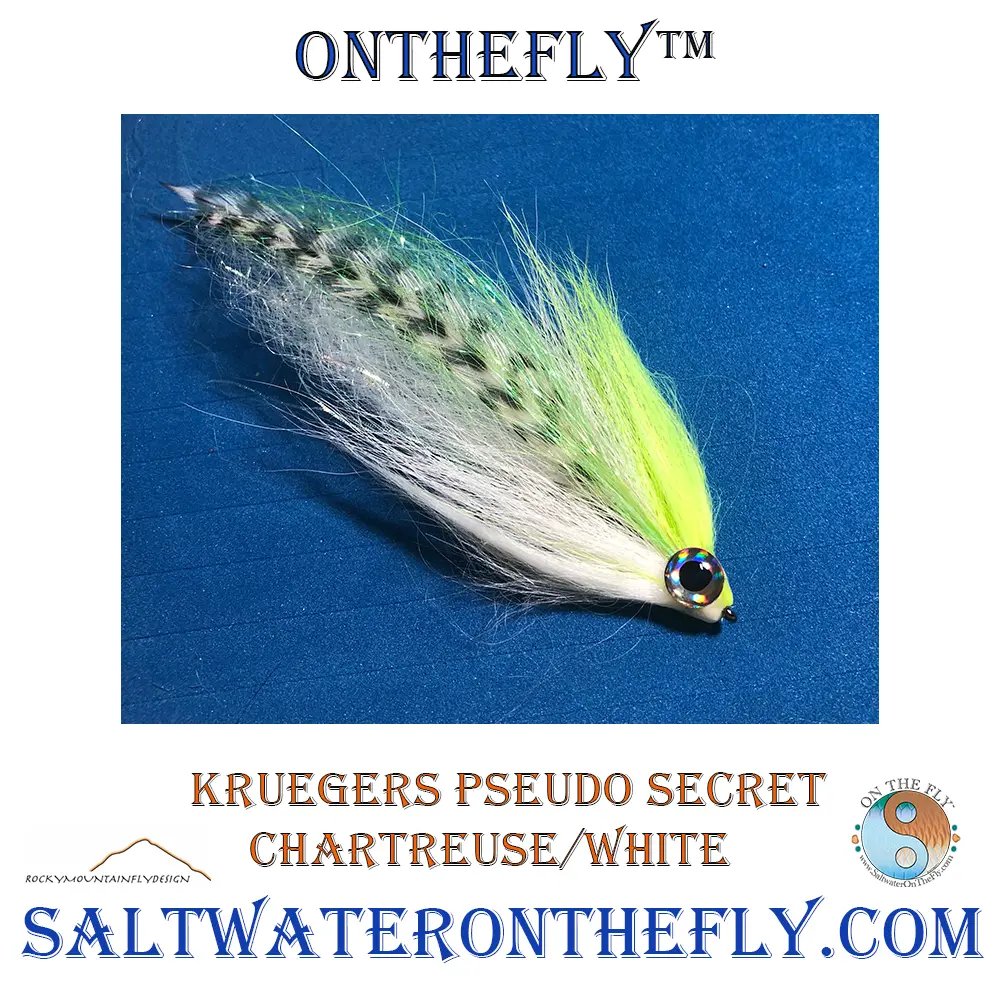
Ideal Locations For Striped Bass Fly Fishing
If you’re keen on striped bass fly fishing, certain locations offer a higher chance of success. Stripers are picky and they tend to favor specific environments.
Estuaries: The Hidden Gem for Striper Anglers
When targeting stripers, don’t overlook the estuaries. These unique ecosystems where rivers meet the sea provide abundant food sources that attract large schools of striped bass. Here, water depth varies with tides creating a dynamic environment perfect for these opportunistic feeders.
In places like Long Island, anglers have found great success in its numerous estuaries using sinking lines to get their flies deep into the water column where stripers lurk.
Sandy Beaches: An Accessible Playground for Fly Anglers
Sandy beaches may seem an unlikely spot but many experienced striper anglers swear by them. Particularly during falling tide when smaller fish are swept out from marshes providing easy meals for hungry stripers lurking nearby.
Fly rods paired with intermediate lines work wonders here as it allows your fly to hover just above the sandy bottom – right in front of a striper’s mouth. Also consider paying attention to beach structure such as sandbars or drop-offs which often hold larger fish waiting in ambush.
Rugged Rocky Flats: Where Big Stripers Hang Out
Rhode Island, also known as ‘Striper Capital’, offers some impressive rocky flats ideal for hunting big stripes on foot or kayak at night.
Here, stripers take advantage of the current to ambush their prey hiding among rocks. A good practice is to fish your fly close to these structures but be mindful of snags. While floating lines can work in shallow water, a faster sinking line may be needed when fishing deeper sections.
The Deep Water Challenge: Striper Hunting Offshore
Unfortunately, the provided content is incomplete and lacks enough context to generate a meaningful paragraph. Please provide more information or complete sentences for an appropriate response.
Deep Water Tactics For Striped Bass Fly Fishing
Unlike the shallow waters of estuaries or sandy beaches, deeper waters demand heavy lines with shooting heads to reach stripers lurking below.
The great news is that having a good grasp of certain techniques can significantly enhance your odds of succeeding. So let’s dive into the depths and unravel these secrets.
Mastery Of The Countdown Method
The countdown method is crucial when targeting striped bass in deep water. After casting your fly out into the abyss, you start counting down before beginning your retrieve. This allows your line to sink to different depths within the water column, which mimics how baitfish move.
Your count will vary depending on factors like current speed and depth of water – so it may take some experimentation. But this technique gets your fly closer to where those elusive stripers are feeding.
Using Heavier Lines And Shooting Heads
In deep water scenarios, standard fly lines might not cut it because they won’t get down fast enough. Instead, heavier lines with shooting heads allow for longer casts and faster sinking rates—two vital elements when trying to coax a striper from its comfortable spot at lower depths.
A larger fish demands more power during retrieval as well – remember that weight rod we talked about earlier? It’ll come handy here.
Selecting Effective Deep-Water Flies
Wikipedia’s page on Fly Fishing suggests flies imitating local prey species tend to work best. In the case of striped bass, flies like Clouser Minnows and Lefty’s Deceivers can be highly productive.
While smaller flies may attract more bites in shallow water, larger ones often do better in deep water because they’re easier for stripers to spot amidst the murk.
Paying Attention To The Tides
It seems like there’s something missing here. Could you provide the full text so I can give a comprehensive rewrite?
Safety Measures And Conservation In Striped Bass Fly Fishing
Let’s be real, fly fishing for striped bass can feel like wrestling with a torpedo. But before you wade into the surf or launch your boat, remember that safety comes first.
The gear you use should be able to withstand saltwater conditions. A strong reel with sealed drag is not just about performance—it prevents corrosive damage and unexpected equipment failure in the water.
Personal Safety Precautions
Fly anglers often find themselves knee-deep in moving waters during falling tides, so it’s crucial to keep an eye on changing conditions. Storms roll in quickly along coastal areas and visibility can drop faster than a Clouser Minnow sinking line—so always check local weather forecasts.
You might have visions of landing larger fish but don’t forget to consider the smaller ones too – underwater hazards. Keep clear from sharp rocks and marine life underfoot by using quality footwear designed for rocky flats or sandy beaches.
Catch And Release Practices For Conservation
Moving onto conservation measures—the good news is most bass anglers are already ahead of this game because catch-and-release has long been part of our sport’s ethos. However, let me tell you something: it’s not enough to just toss back a fish after catching it—you’ve got to do it right.
- To minimize harm when handling fish, wet your hands first. This protects their delicate scales and slime coating which they need for disease resistance.
- Avoid taking stripers out of water longer than necessary—a few quick photos then release them promptly.
- When unhooking a striper, use long-nose pliers or forceps to avoid getting hooked yourself and causing minimal harm to the fish’s mouth.
If you’re using larger flies, consider barbless hooks. They are easier to remove from the striper’s mouth and they’ll let you feel like a true sportsman when that big one does get away.
Safety Measures And Conservation In Striped Bass Fly Fishing
Let’s be real, fly fishing for striped bass can feel like wrestling with a torpedo. But before you wade into the surf or launch your boat, remember that safety comes first.
The gear you use should be able to withstand saltwater conditions. A strong reel with sealed drag is not just about performance—it prevents corrosive damage and unexpected equipment failure in the water.
Personal Safety Precautions
Fly anglers often find themselves knee-deep in moving waters during falling tides, so it’s crucial to keep an eye on changing conditions. Storms roll in quickly along coastal areas and visibility can drop faster than a Clouser Minnow sinking line—so always check local weather forecasts.
You might have visions of landing larger fish but don’t forget to consider the smaller ones too – underwater hazards. Keep clear from sharp rocks and marine life underfoot by using quality footwear designed for rocky flats or sandy beaches.
Catch And Release Practices For Conservation
Moving onto conservation measures—the good news is most bass anglers are already ahead of this game because catch-and-release has long been part of our sport’s ethos. However, let me tell you something: it’s not enough to just toss back a fish after catching it—you’ve got to do it right.
- To minimize harm when handling fish, wet your hands first. This protects their delicate scales and slime coating which they need for disease resistance.
- Avoid taking stripers out of water longer than necessary—a few quick photos then release them promptly.
- When unhooking a striper, use long-nose pliers or forceps to avoid getting hooked yourself and causing minimal harm to the fish’s mouth.
If you’re using larger flies, consider barbless hooks. They are easier to remove from the striper’s mouth and they’ll let you feel like a true sportsman when that big one does get away.
FAQs in Relation to Getting Started Striped Bass Fly Fishing
How do you catch striped bass for fly fishing?
Catching stripers with a fly rod needs the right gear, casting skills, and knowledge of their behavior. Use popular flies like Clouser Minnows and fish in prime locations such as estuaries or rocky flats.
What size fly-rod for striped bass?
A 10-weight fly rod is typically recommended for shore-bound anglers targeting striped bass. It offers a good balance between power and versatility.
What fly line to use for striped bass?
Floating lines are versatile enough to be used in different environments like estuaries and rocky flats. But if you’re fishing open-sandy beaches or deeper water, intermediate lines may work better.
Where is the best place to fly fish for stripers?
The best places include estuaries, rocky flats, sandy beaches where stripers tend to feed. Areas along Long Island or Rhode Island offer great spots too.
In Conclusion of Striped Bass Fly Fishing
Getting Started Striped Bass Fly Fishing isn’t just about gear, but it’s a crucial part. The right rod and reel, especially a 10-weight fly rod and strong saltwater reel can make all the difference.
Your casting skills are another piece of this puzzle. Practicing at an open space like a soccer field or park will help improve your distance and accuracy.
Understanding striped bass behavior is key to timing your fishing trips for maximum success. They’re most active near or after dark, particularly around sunrise or during total darkness.
Picking the perfect flies such as Clouser Minnows can also boost your chances of catching those stripers you’ve been dreaming about!
You’ve got tools in hand now to begin this exciting journey into striped bass fly fishing! Here’s wishing you many successful trips ahead filled with beautiful scenery, peaceful solitude…and some great catches too!

